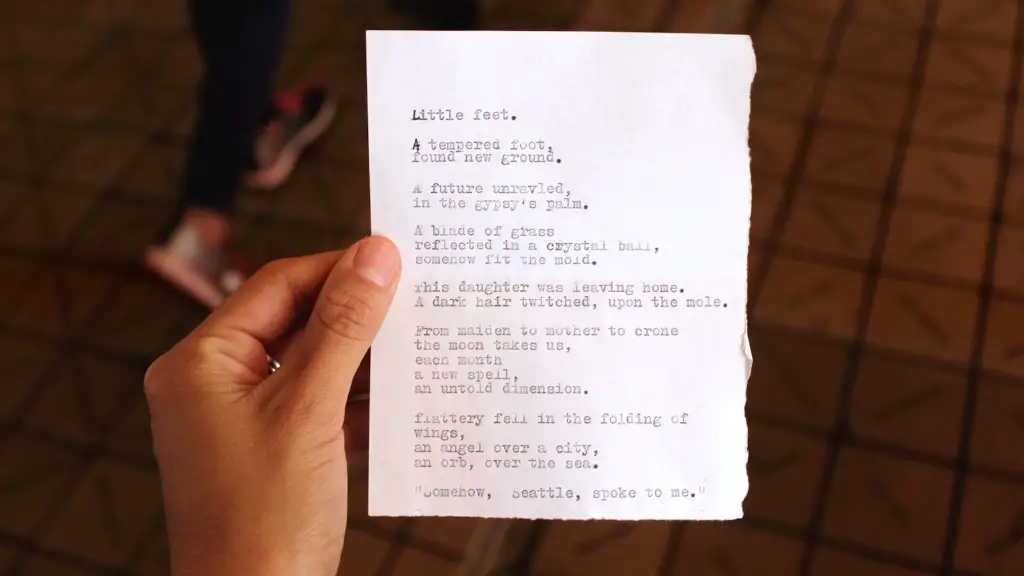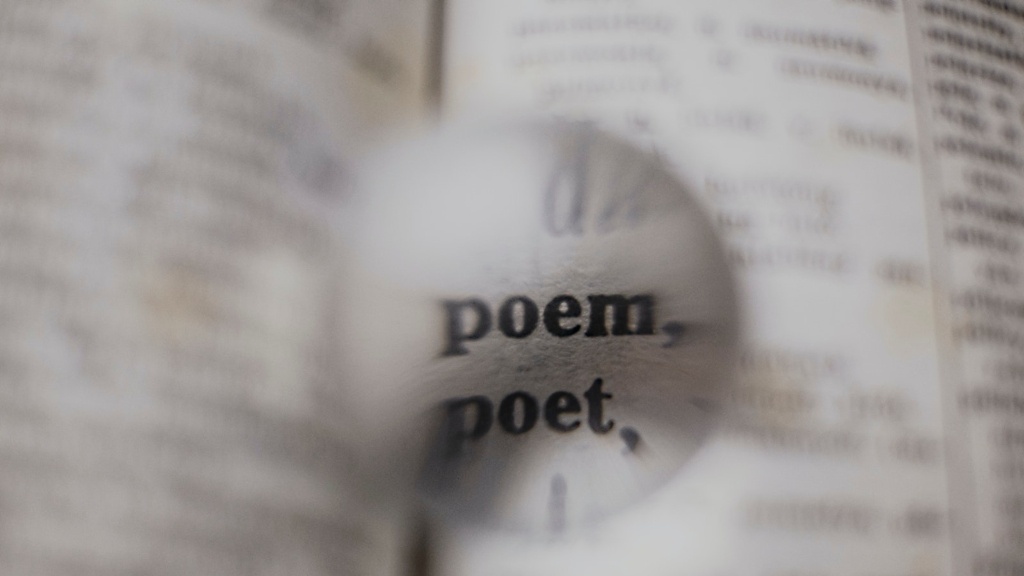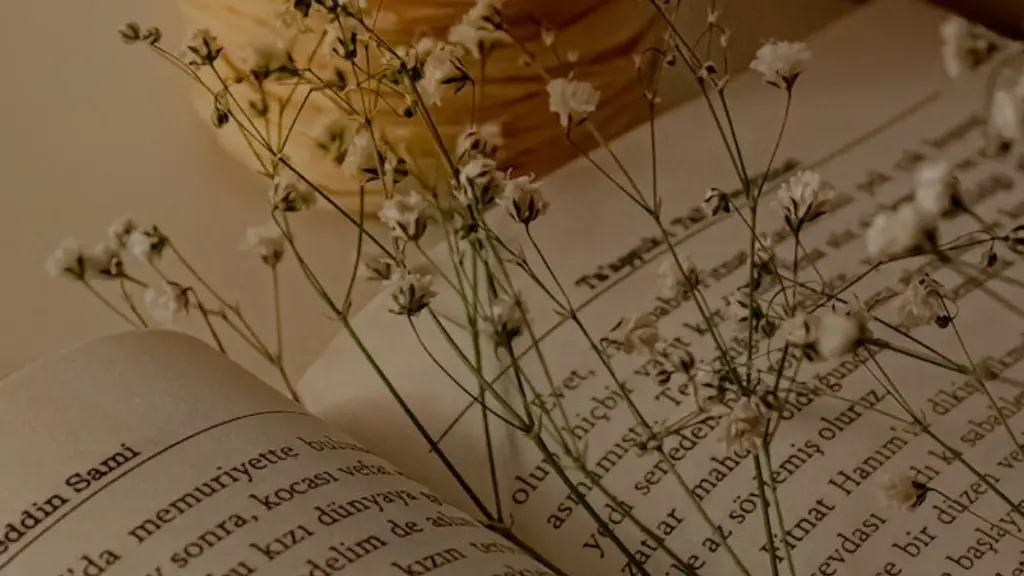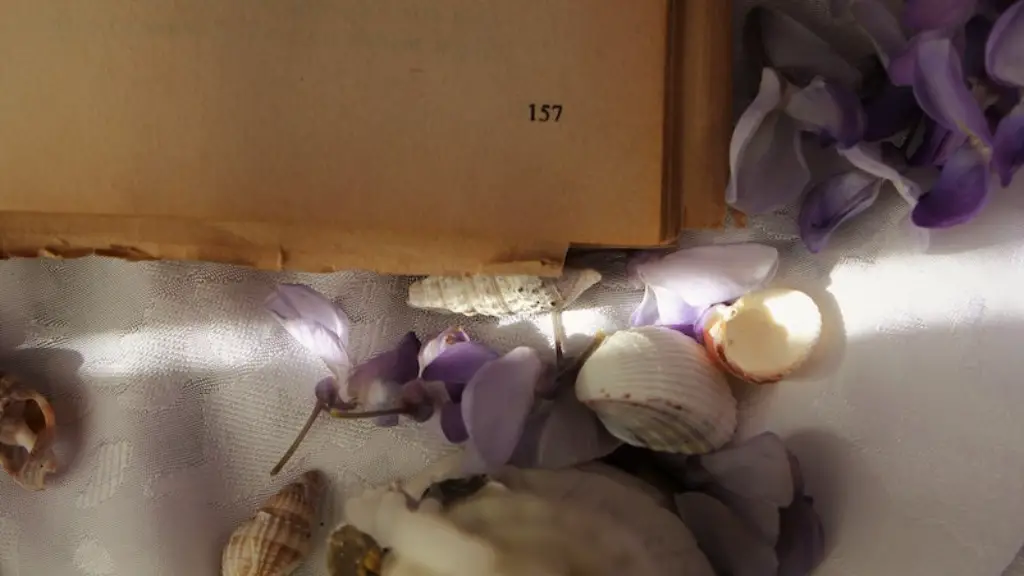Emily Dickinson is widely considered one of America’s greatest poets. She was a prolific writer, penning hundreds of poems during her lifetime. Dickinson’s poems are often characterized by their use of simple language, striking imagery, and unexpected turns. Her poems can be difficult to interpret, but they are always evocative and memorable.
Dickinson’s poems are typically short, with few words on each line. They often make use of slant rhyme, and their language is often quite simple. However, despite their apparent simplicity, her poems are often very powerful and moving. They often deal with themes of death, love, and nature, and her poems often have a biting, ironic edge.
How would you describe Emily Dickinson’s poetry?
Emily Dickinson’s writing style is most certainly unique. She used extensive dashes, dots, and unconventional capitalization, in addition to vivid imagery and idiosyncratic vocabulary. Instead of using pentameter, she was more inclined to use trimester, tetrameter, and even dimeter at times. This made her style very difficult to imitate, and her writing has remained influential even after her death.
Emily Dickinson was an American poet who was best known for her use of slant-rhyme, conceits, and unconventional punctuation. She was also known for her near-legendary reclusive habits.
What makes Dickinson’s poems hard to understand
Her poems can be difficult to understand because she uses unconventional grammar and figures of speech, and her symbolism and allegory can be quite vague. However, her poems are often very beautiful and moving, and well worth the effort to try to understand them.
Emily Dickinson is unique in that she has a couple of different tones in her poetry. She has death and suffering poems, in which she is quite pessimistic and depressing, very dark and gloomy. But she also has some poems that read like tiny essays with a cognition above and beyond all other poets.
What are the themes of Dickinson’s poetry?
There is no doubt that Emily Dickinson was a unique individual, and her poetry reflects that. While she certainly addressed many of the same themes as other writers of her time, she did so in a way that was entirely her own. Her use of language, imagery, and metaphor set her apart from the rest of her peers, and helped to make her one of the most revered poets in American history.
Dickinson’s poetry often deals with ambiguous subjects, and her use of imagery, enjambment, and dashes only serve to increase the uncertainty surrounding these topics. By using these devices, Dickinson is able to create a greater sense of ambiguity in her poetry, which can lead to a more profound understanding of her subjects.
What is the focus of Emily Dickinson poetry?
Her poems are beautiful and address a wide range of emotions and experiences. She has a unique voice that speaks to the human condition. Her poems about love and love lost are particularly poignant.
Emily Dickinson’s poetry is characterized by its unconventional themes, individualism, transcendentalism, spiritualism, realism, and symbolism. Her poems often explore themes of death, love, nature, and religion, and her use of language and imagery is often innovative and suggestive. Dickinson was a prolific private poet, and only a handful of her works were published during her lifetime. However, her poetic legacy was not fully recognized until after her death, when her work was posthumously published and she came to be regarded as one of the most important American poets of the 19th century.
Why are Emily Dickinson’s poems good
This is true of most art, I think. The artist is trying to communicate something personal and universal at the same time. And we’re drawn to it because it feels honest and authentic.
Quality Characteristics:
-Imaginative: Creates new ideas or perspectives
-Creative: Comes up with original solutions
-Descriptive: Uses language that is vivid and precise
-Concise: Uses few words to communicate meaning effectively
-Enhances meaning: Brings to life related experiences for the reader or listener
-Provokes thought: Asks readers to think critically about the issues at hand
How does Emily Dickinson use imagery?
In “I Felt a Funeral in My Brain,” Dickinson uses the image of a funeral procession to symbolize the death of her own mind. The “mourners” in the poem represent the different parts of her psyche, and the “coffin” represents her mental state. The poem is a powerful depiction of Dickinson’s struggle with mental illness.
In “I Heard a Fly Buzz-When I Died,” Dickinson uses the image of a fly buzzing around a corpse to symbolize death itself. The fly represents the inevitability of death, and the speaker’s calm acceptance of it.
In “Because I Could Not Stop for Death,” Dickinson uses the image of Death as a gentleman caller who takes the speaker on a ride in his carriage. The poem is a beautiful and moving depiction of death as a gentle, natural process.
In her work, Emily Dickinson asserts the importance of the self, a theme closely related to her censure of God. As Dickinson understood it, the mere act of speaking or writing is an affirmation of the will, and the call of the poet, in particular, is the call to explore and express the self to others. For Dickinson, the self is a source of strength and power, and she urges her readers to embrace and celebrate their own individuality.Dickinson’s insistence on the importance of the self is a central theme of her work, and it is one that continues to resonate with readers today.
Is Emily Dickinson a romantic poet
Emily Dickinson is one of the most well-known female poets of her time. As a Romantic figure, she was influenced by transcendentalism and dark romanticism. Dickinson is known for her unique style of writing, which breaks from traditional poetic form and syntax. Her works focus on the inner workings of the mind, and the hidden consciousness of fragmented thoughts. While her work was initiallycriticized, it is now considered to be some of the most important and groundbreaking poetry of the 19th century.
Dickinson is now known as one of the most important American poets, and her poetry is widely read among people of all ages and interests. Emily Dickinson was born in Amherst, Massachusetts on December 10, 1830 to Edward and Emily (Norcross) Dickinson. She largely educated herself through reading and later attended Mount Holyoke Female Seminary for one year. Dickinson was a reclusive figure, and only a handful of her nearly eighteen hundred poems were published during her lifetime. After her death on May 15, 1886, her sister Lavinia found a trove of Dickinson’s poems, and the first volume of Dickinson’s poetry was published in 1890.
What made Emily Dickinson’s life unique?
Dickinson was a very private person and preferred to be alone most of the time. She was considered eccentric by her neighbors and wore mostly white clothes. Later in life, she became even more reclusive and hardly ever left her bedroom.
Emily Dickinson is one of America’s most renowned poets. She is known for her unique style of writing and her interesting choice of topics. She often wrote about things she knew about or things that intrigued her. As a keen observer, she would use images from nature, religion, law, music, commerce, medicine, fashion, and domestic activities to explore universal themes. This made her poems relatable to a wide audience and helped her to become one of the most popular poets of her time.
What is the mood of the poem
Mood is an important element in poetry, as it can help to set the scene and create an atmosphere for the reader. By carefully choosing words and phrases, the poet can create a mood that reflects the emotional landscape of the poem. For example, a poem about a loved one who has passed away may be filled with sadness and despair, while a poem about a joyful moment may be filled with happiness and joy. By conveying the mood of a poem through word choice and subject matter, the poet can create a powerful and moving experience for readers.
The mood of a piece of writing is the atmosphere of a piece and the overall feeling it conveys to the reader. It can be affected by the author’s tone, as well as thesetting, plot, and characters.
Final Words
There is no one correct answer to this question, as people will have different opinions on how to describe the poetry of Emily Dickinson. However, some possible ways to describe her poems would be to say that they are beautiful and lyrical, yet also deal with dark and complex themes. Her poems often convey a deep emotional intensity, and her use of language is both unique and powerful. Dickinson is considered one of the most important American poets, and her work continues to inspire and resonate with readers today.
Emily Dickinson poems are described as being short, often with simple language and common, everyday imagery. They are often about love, death, and nature, and often have a mysterious or dark tone.





